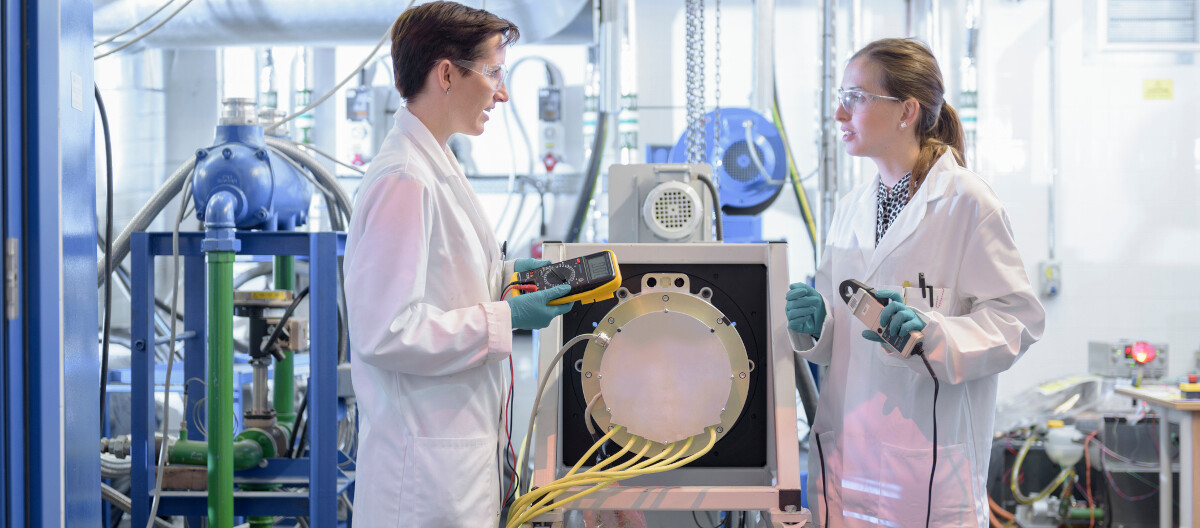Australian researchers achieve a breakthrough in water batteries
For several years, scientists have been researching a sustainable alternative to the lithium-ion batteries in current use, which have an extremely limited lifecycle and whose production relies on raw materials such as lithium and graphite. Considerable environmental and social risks are involved in the extraction of these materials. In early 2024, Australian researchers at RMIT University in Melbourne appeared to make a breakthrough: they managed to develop a so-called “water battery” which is non-flammable, recyclable, has a long shelf life and is cost-effective to produce. This type of metal-ion battery does not require lithium. Instead, it’s made of the raw materials zinc or magnesium, both of which are widely available and less toxic. These new batteries use water instead of organic electrolytes, which consist of solvents with dissolved lithium salts.
So far, only small button battery prototypes have been produced, but these show a very slow decline in performance: scientists discovered that even after 500 charging cycles, they still had a capacity of just under 87%.
There’s still a long way to go before they’re market-ready but they could replace lithium-ion batteries by around 2030, and lead-acid batteries even sooner. The technology is ideally suited for large-scale battery storage systems, which are used to capture wind and solar energy. Currently, low-cost lead-acid batteries are used for large-scale grid storage.
Battery production in 2024: sustainability is key
Batteries enable the transition to sustainable energy and are a key technology for ensuring the automotive industry is competitive. In 2024, the concept of sustainability will shape battery production in Europe more than ever before: companies are likely to promote it as a key pillar of corporate identity, since the Asian market will continue to dominate purely on price. For example, European companies in the battery industry are already increasingly focusing on the production of lithium iron phosphate (LFP) cells, which are considered more sustainable compared to lead-acid batteries and other lithium batteries. Sodium‐ion batteries, despite their lower energy density compared to lithium‐ion batteries, could also play an increasing role, as they do not require scarce resources, are cheaper to produce, aren’t sensitive to deep discharge, and have a longer lifespan.
Another way to achieve greater sustainability would be to extract lithium from brine or hydrogeological sources, a more environmentally friendly process.
The UK battery industry: a strategy for 2030 and beyond
The UK is also heavily dependent on imported batteries from East Asia. In response to this, the UK government has produced a national Battery Strategy, a vision for the UK to have a globally competitive battery supply chain by 2030. This strategy will not only support economic prosperity, but will also contribute to the UK’s ability to achieve net zero by 2050. The UK aims to be a world leader in sustainable battery design and manufacture, with a thriving battery innovation ecosystem.
The UK Battery Strategy has been developed alongside the government’s Advanced Manufacturing Plan, which includes a commitment to over £2 billion in new capital and R&D funding for the automotive sector. This is planned to support the development of zero emission vehicles, their batteries and the associated supply chain for five years to 2030.
In addition to the UK government’s plans to source traditionally-used minerals such as lithium, cobalt, nickel and graphite domestically, companies here are also developing alternatives as part of their commitment to sustainability.
Four vanadium flow batteries, manufactured by Invinity Energy Systems, were installed in 2022 at the wastewater treatment works serving the city of Perth in Scotland. The batteries are capable of storing up to 0.8 megawatt hours (MWh) of energy and will be used to store power generated from more than 2,520 solar panels, with a combined output of over 1 megawatt (MW). By combining battery storage and solar power, the carbon footprint of the treatment works will be cut by around 160 tonnes of CO2 per annum. Almost 80% of Scottish Water’s water and wastewater treatment works are now either self-sufficient or partly sufficient in their power requirements, reflecting the company’s goal of reaching net zero carbon emissions by 2040.
